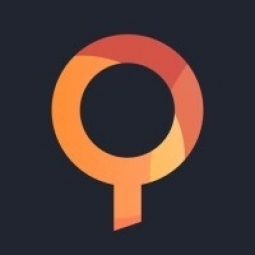Technology Category
- Analytics & Modeling - Real Time Analytics
- Networks & Connectivity - MQTT
Applicable Industries
- Healthcare & Hospitals
Use Cases
- Real-Time Location System (RTLS)
- Regulatory Compliance Monitoring
About The Customer
Nuvo is a hyper-growth Medtech company that is revolutionizing pregnancy care by pioneering the future of connected healthcare. Their data products roll out at an impressive rate for a heavily regulated organization. These products include wearable bands that collect biosensory data, web services for health practitioners, and AI-powered insights on fetal heart rate. Nuvo is committed to meeting regulatory requirements and has spent years securing FDA approval. They have a strong focus on data security and have established clear best practices around who can access what data. Nuvo's engineering teams have an open-source, build-first philosophy when it comes to their data projects.
The Challenge
Nuvo, a hyper-growth Medtech company, is revolutionizing pregnancy care by pioneering the future of connected healthcare. However, this innovation comes with the challenge of ensuring that engineers can access and use streaming data in compliance with regulations. The company's data products, which include wearable bands collecting biosensory data, web services for health practitioners, and AI-powered insights on fetal heart rate, roll out at an impressive rate for a heavily regulated organization. A few years ago, Nuvo completely overhauled and modernized their data infrastructure to accommodate streaming data and applications. They needed a system that could reliably capture and transform 18,000 packets of electro and phonocardiogram per minute, along with other biometric data. However, RabbitMQ did not provide the flexibility Nuvo required.
The Solution
Nuvo opted for Apache Kafka and Kafka Connect with Kubernetes, along with MQTT for the Internet of Things, to meet their requirements. This technology stack allowed their engineering teams to write in any framework they preferred, from Python to C-Code and Java. To meet regulatory requirements beyond HIPAA and secure FDA approval, Nuvo had to establish clear best practices around data access. This involved years of careful box-checking and process-building. Nuvo also had to ensure that they did not have 'Software of unknown pedigree' in their systems without sufficient technical and legal due diligence. As a result, Nuvo's engineering teams adopted an open-source, build-first philosophy for their data projects. They selected Lenses to provide a developer experience over Apache Kafka, enabling the back-end team to easily troubleshoot and debug data using a secure interface, without needing to resort to the command line.
Operational Impact
Quantitative Benefit

Case Study missing?
Start adding your own!
Register with your work email and create a new case study profile for your business.
Related Case Studies.

Case Study
Hospital Inventory Management
The hospital supply chain team is responsible for ensuring that the right medical supplies are readily available to clinicians when and where needed, and to do so in the most efficient manner possible. However, many of the systems and processes in use at the cancer center for supply chain management were not best suited to support these goals. Barcoding technology, a commonly used method for inventory management of medical supplies, is labor intensive, time consuming, does not provide real-time visibility into inventory levels and can be prone to error. Consequently, the lack of accurate and real-time visibility into inventory levels across multiple supply rooms in multiple hospital facilities creates additional inefficiency in the system causing over-ordering, hoarding, and wasted supplies. Other sources of waste and cost were also identified as candidates for improvement. Existing systems and processes did not provide adequate security for high-cost inventory within the hospital, which was another driver of cost. A lack of visibility into expiration dates for supplies resulted in supplies being wasted due to past expiry dates. Storage of supplies was also a key consideration given the location of the cancer center’s facilities in a dense urban setting, where space is always at a premium. In order to address the challenges outlined above, the hospital sought a solution that would provide real-time inventory information with high levels of accuracy, reduce the level of manual effort required and enable data driven decision making to ensure that the right supplies were readily available to clinicians in the right location at the right time.

Case Study
Gas Pipeline Monitoring System for Hospitals
This system integrator focuses on providing centralized gas pipeline monitoring systems for hospitals. The service they provide makes it possible for hospitals to reduce both maintenance and labor costs. Since hospitals may not have an existing network suitable for this type of system, GPRS communication provides an easy and ready-to-use solution for remote, distributed monitoring systems System Requirements - GPRS communication - Seamless connection with SCADA software - Simple, front-end control capability - Expandable I/O channels - Combine AI, DI, and DO channels

Case Study
Driving Digital Transformations for Vitro Diagnostic Medical Devices
Diagnostic devices play a vital role in helping to improve healthcare delivery. In fact, an estimated 60 percent of the world’s medical decisions are made with support from in vitrodiagnostics (IVD) solutions, such as those provided by Roche Diagnostics, an industry leader. As the demand for medical diagnostic services grows rapidly in hospitals and clinics across China, so does the market for IVD solutions. In addition, the typically high cost of these diagnostic devices means that comprehensive post-sales services are needed. Wanteed to improve three portions of thr IVD:1. Remotely monitor and manage IVD devices as fixed assets.2. Optimizing device availability with predictive maintenance.3. Recommending the best IVD solution for a customer’s needs.

Case Study
HaemoCloud Global Blood Management System
1) Deliver a connected digital product system to protect and increase the differentiated value of Haemonetics blood and plasma solutions. 2) Improve patient outcomes by increasing the efficiency of blood supply flows. 3) Navigate and satisfy a complex web of global regulatory compliance requirements. 4) Reduce costly and labor-intensive maintenance procedures.

Case Study
Cloud-based healthcare solution for Royal Philips
Royal Philips wanted to launch its cloud-based healthcare solution HealthSuite Digital Platform in China to deliver services to help cope with challenges related to urbanization and population growth. Philips wanted to achieve this goal by combining mobile, cloud computing and big data technologies. To bring this platform and product to market, Philips required cloud computing and local technical service capabilities in China, in addition to a flexible IT infrastructure that could handle user requests.








